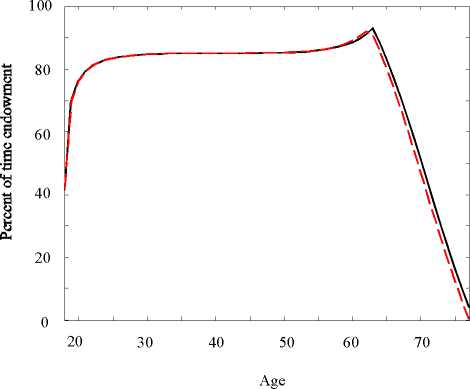Figure 5b. Work effort for non-conscripts (∙ = 0.25 and ∙ = 0.50)

Table 3 presents the welfare effects for conscripts and non-conscripts for dif-
ferent initial proportional tax rates on labor income and supplementary tax rates.
We keep the supply of physical capital and labor services constant across different
initial levels of public spending, i.e. the capital-labor ratio is unchanged. Net
factor prices are kept unchanged as well, and the cost of labor services varies with
the initial tax rate on labor income. I.e. the capital value share falls when the
initial tax rate on labor income increases.10 Finally, the level of output is adjusted
to meet the changes in public spending requirements. This method implies that
the tax base with respect to the supplementary tax rate is unchanged across the
different initial steady state equilibria.
Table 3. Effects of move to draft system across initial public expenditure levels (percentage change from initial steady
state equilibrium)a
|
0 percent |
Supplementary tax rate 50 percent |
100 percent | ||||
|
Welfare of |
Welfare of |
Welfare of |
Welfare of |
Welfare of |
Welfare of | |
|
Initial tax rate on labor income: | ||||||
|
16.7 percent |
-0.9 |
-0.1 |
-3.3 |
0.0 |
-5.6 |
0.2 |
|
37.5 percent |
-1.0 |
-0.1 |
-3.4 |
-0.1 |
-5.8 |
-0.1 |
|
50.0 percent |
-1.1 |
-0.2 |
-3.6 |
-0.3 |
-6.1 |
-0.3 |
Note: (a) 25 percent of the population is subject to draft.
The results indicate that conscripts may experience a significant welfare loss,
while the welfare effects for non-conscripts are less certain. The reform leads to
a reduction in labor income and thus erodes the tax revenue from the tax rate
10If capital value share were kept constant, then tax base to finance public spending or some
of the parameters present in individual maximization problem would have to be adjusted.
16
More intriguing information
1. The name is absent2. The name is absent
3. Herman Melville and the Problem of Evil
4. A Multimodal Framework for Computer Mediated Learning: The Reshaping of Curriculum Knowledge and Learning
5. Empirically Analyzing the Impacts of U.S. Export Credit Programs on U.S. Agricultural Export Competitiveness
6. MATHEMATICS AS AN EXACT AND PRECISE LANGUAGE OF NATURE
7. The name is absent
8. The name is absent
9. AGRICULTURAL TRADE IN THE URUGUAY ROUND: INTO FINAL BATTLE
10. The name is absent